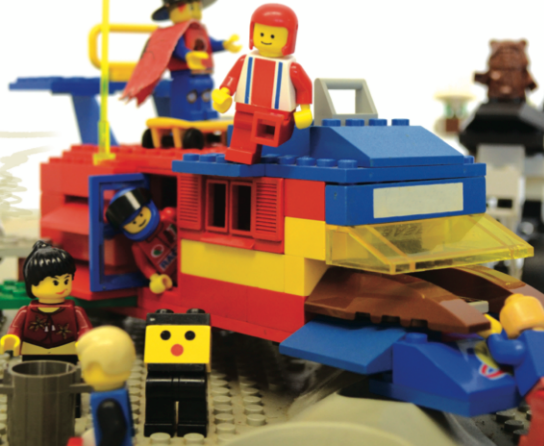By Taylor Johnson (The Cascade) – Email
Print Edition: October 31, 2012
Robin Sather is an Abbotsford native and one of 13 certified Lego builders in the world. He is known for large Lego art pieces around the Fraser Valley, as well as several interactive community projects centred around Lego as a building medium.
How did you get into working with Lego?
Well I have been involved in Lego, for eight years now. Growing up I never quit being a fan of Lego – I never got rid of it. When I was a teenager I would still break out the bricks on a rainy Sunday afternoon. Once the internet came around I found tens of thousands of people who enjoyed Lego like I did. I found hobby clubs and eventually managed to find a way to make it into more than a hobby.
The Lego headquarters are in Denmark and there is another in the United States – however, there were no Lego events here. I thought “What if I did this?” as there was a market for Lego in Canada. I organized a proposal and approached Lego, they loved it, and in 2005 I became the first certified builder.
To become certified you must already work with Lego, whether that be writing books or building. I had to undergo training with the company on media and the company values. Right now there are 13 of us worldwide but it is continuing to grow.
How long does it take to make a larger piece (on average)?
Depending on the project, normally they are built over two to three days on the weekend. We did a Hong Kong exhibit in Richmond that was about 300 hours of work. Forty per cent of that was done in-studio, then one month building on-site.
You have to plan out the bricks; it takes time and the patience to see it through to the end. The sphinx we built was part of an exhibit so it came right apart. We did a kind of controlled demolition at each site; it became a big event in itself. We would put the Lego into bins and rebuild at the next site, and we did this six times over.
What is the hardest part about building?
Planning it out is tricky because I don’t have the bricks yet; I have to figure out how many bricks I will need. Once I figure that out, I send my order into Lego and it normally takes a few weeks for the bricks to come in. We use Duplo bricks for bigger builds and the smaller bricks for the details.
Too many bricks are fine, but not enough can be a problem. It is weird for customs to ship Lego, because it comes in big bins and they’re not always sure what to do with it. Sometimes things get lost; it takes a lot of patience. The things beyond your control are the most stressful. The actual building mistakes can just be considered as artistic and unique.
What is the biggest difficulty being the only certified builder in Canada?
It’s a regular job, so there are logistics to deal with and traveling. Lego will bring me out to do events. I try to stick to one trip a month but it is never consistent, and summer can be really busy.
It is a bit straining but I have other helpers, [even if] it is difficult to find good people. Some people have a lot of fun with this, but some do not apply themselves. I do a lot of work with hobby clubs and have made friendships across the country.
Where would you like to be in five years? Is there anything you hope to be building?
I would like to build a large-scale castle or a tower with a wall you can climb or go up – I will find an excuse to do that.
However, the clients usually have an idea for what they want for their events. I would also like to have my own exhibit at some point – something more permanent that can be shared around the world. Nathan Sawaya has an exhibit called “The Art of the Brick” and Sean Kenny has a nature exhibit, and they are both friends of mine. I have some ideas for my own exhibit, but they are top secret.
Do you have any advice for someone looking to pursue their passion?
Find something you love and find a way to get paid for it. My wife and I went backpacking a while ago and we discovered two things. One: if you love something, do not wait. Find it and do it. Two: make it a career, monetize it. Even if it is just a little bit, just do it. No regrets.



